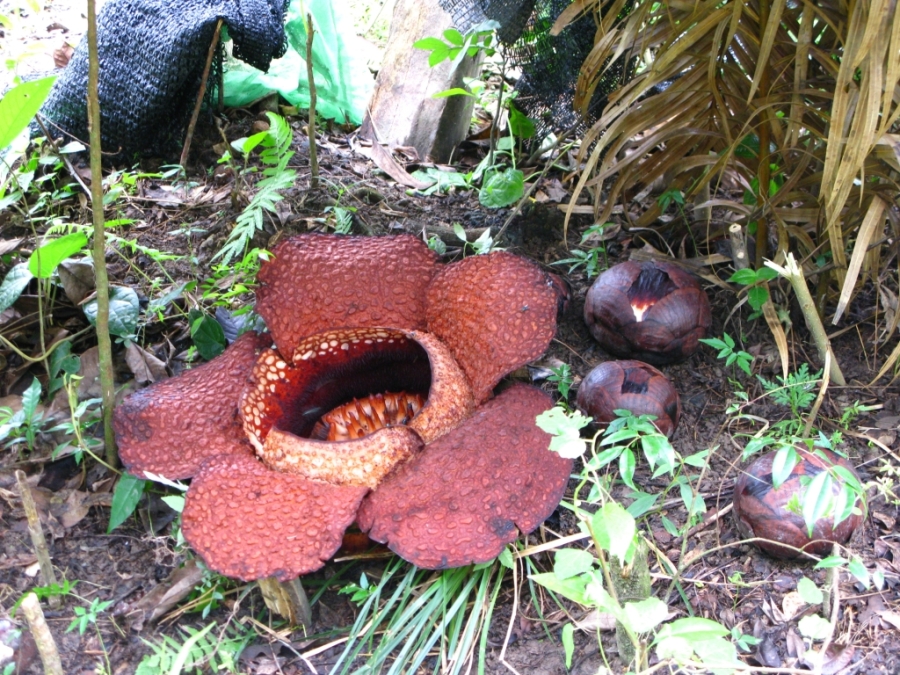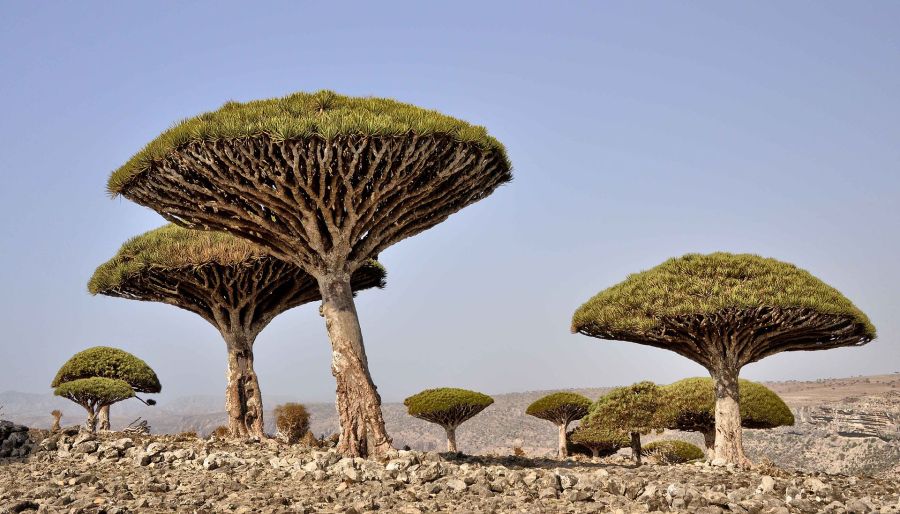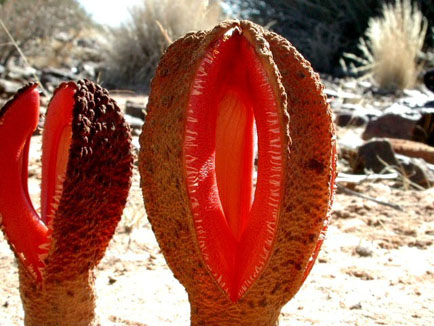At the very beginning of this article, I must admit that its title can be little bit misleading. Therefore, I please you not to understand “weird” as a pejorative word. In this sense, there is no such thing as “weird” in nature.
Rather than that, let´s see it in the meaning of the “most interesting”. There are around 391,000 known plant species in the world (we can only guess how many plant species remain to be discovered) and it is, of course, impossible to choose “weirdest plants in the world” by any objective parameter, plants presented in this article are just incredibly interesting and are worth to be known as they add significantly to the diversity and beauty of our unique planet.
Rafflesia arnoldii
Rafflesia arnoldii (padma raksasa in Indonesian) is often named “corpse lilly” or “kerubut” and it holds one fascinating world record – it produces the largest single flower on Earth.
Its home is in the rainforests of Sumatra and Borneo (in fact, Rafflesia arnoldii is endemic to these areas) and it became one of three national flowers of Indonesia (all together with white jasmine and moon orchid).
The first western scientist who described this plant was a French guy named Louis Auguste Deschamps at the end of 18th century and others followed in the early 1800s.

Rafflesia arnoldii can have as much as 1.05 m (3 ft) in diameter and its buds can have up to 43 cm (17 in). Bud if this size is not only the biggest bud of Rafflesia arnoldii but also the biggest flower bud ever recorded.
This plant is a parasite which lives on several vine species of the Tetrastigma genus and only in the primary rainforests. And where its nickname comes from? It is called “corpse lilly” because of the unpleasant odor it has. But it is beautiful, don´t you think?
Drakaea glyptodon
Drakaea glyptodon nicknamed “king in his carriage” is the orchid species living in the south-west part of the Western Australia. Its strange shape is in fact perfectly “designed” deception tool which can make males of thynnid wasps think that it is the female.
They want to start an affair with the good-looking female and despite the fact that they soon realize that they were deceived, they do a service to the plant as they pollinate it.

The plant was first described by Robert D. Fitzgerald in 1882. To get the idea about this orchid´s size, we can imagine that its petals are 7–9 millimeters long (0.3–0.4 in). Drakaea glyptodon likes sand or gravelly soils and it cab be often found near swamps. It sealed the position in this list mainly because its unique way of tempting the insects necessary for pollination.
Dracaena cinnabari
“Dragon’s-Blood Tree”, how the Dracaena cinnabari is often called, looks like it came from another planet or at least from another time. It is not difficult to imagine it in some scene from the Mesozoic era, looking down to the dinosaurs walking beneath its mighty treetop.
But you do not need a time machine to see it, it lives in the Socotra archipelago in the Arabian sea, in Yemen. It was first described in 1835 by a lieutenant of the East India Company and the first real scientific description was delivered by Scottish botanist Isaac Balfour.

Dragon´s blood tree can be as high as 10 m with leaves of 60 cm to 3 cm big. Its flowers (white or green) are produced mainly in the spring period, mainly in March. The fruits in for of berries are eaten mainly by birds which help them to spread.
These trees are undemanding, can live in the harsh environment of mountaintops and other areas with a low amount of soil. Dracaena cinnabari represents beauty in the other form.
Hydnora Africana
In Hydnora Africana, we have another sci-fi like plant looking like open jaws of some terrifying beast. The most interesting fact is that this “sci-fi part” of the plant is just the flower. The rest of the plant grows underground.
The flowers emit an odor which attracts insect. However, the goal is not to eat it, the plant´s goal is to pass enough pollen to it. Hydnora Africana does not perform photosynthesis, in fact, it is a parasitic plant and it “vacuums” energy from its host.

As its name suggests, Hydnora Africana is native to Africa, it was not a difficult guess. However, this one is harder. Not many people would guess that it produces a fruit. It grows underground (for two years) and it looks like a potato. Each “potato” has around 20,000 seeds. This plant still holds many mysteries and it will take some time to find answers to all of our questions. But a secret is part of nature´s charm and beauty, isn´t it?
Cleistocactus strausii
Plains of South America are home to many cactuses, the Silver Torch Cactus I one of the most interesting of them all. It lives above 3,000 meters of the Argetinian and Bolivian highlands.
These plants can be 3 m of height but only 6 cm in diameter. However, as they live in colonies or columns, they are usually very imposing. This cactus is perfectly fitted up for the environment of South American highlands.
It likes dry soil, a lot of sunshine but not very high temperatures (it can easily withstand temperatures as low as -10°C (i.e. 14F) ). Too much water can cause it to rot.

In summer, deep red flowers come into bud and make the cactus really beautiful and “weird” (it means interesting, do you remember?) as they grow horizontally from the cactus´ body. The red flowers do not usually open which is characteristics that gave the cactus its Latin name – Cleistocactus is derived from Greek “kleistos”, closed.
Although plants are often considered to be “less interesting” than animals, these five examples are showing us that it is not justified at all. All the plants are very interesting and deserve our attention as well as protection!

Fascinating.
LikeLike